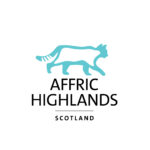Rewilding Affric Highlands
A landscape-scale partnership of landowners to reinvigorate wildlife and communities
Rewilding Affric Highlands is working with local partners to aid the recovery of natural landscape, and restore the ancient Caledonian pinewood. Natural corridors like rivers and mountain ridges will become more wooded. Wild forests and scrublands, connected by naturally regenerating tree cover, will increasingly support a rich biodiversity. Plantations will be selectively replaced with native forest. And natural grazing will play its part as a catalyst for biodiversity. Deer will play their part too with more carrion sustaining more life up and down the food chain.
Habitats will be reconnected to facilitate wildlife movement, with fences removed and a contiguous wild and dynamic area established in collaboration with landowners. This will also support the comeback of the Scottish wildcat to the area. Work is in progress to reintroduce this legendary, yet critically endangered flagship species that depends greatly on habitat connectivity.
This initiative is an ambitious landscape-scale rewilding initiative that stretches from Loch Ness on the east coast of the central Highlands across to Kintail in the west – taking in Glens Cannich, Affric, Moriston and Shiel. A network of land is poised to be restored, boosting habitat connectivity, species diversity and social and economic opportunities in the region.
We want to have rewetted peatlands that become a haven for invertebrates and rare flora, while soaking up carbon. We aim for a more functional landscape, where natural processes are the driving force, shaping a promising new setting for nature and people.

Rewilding Affric Highlands is working with local partners to aid the recovery of natural landscape, and restore the ancient Caledonian pinewood. Natural corridors like rivers and mountain ridges will become more wooded. Wild forests and scrublands, connected by naturally regenerating tree cover, will increasingly support a rich biodiversity. Plantations will be selectively replaced with native forest. And natural grazing will play its part as a catalyst for biodiversity. Deer will play their part too with more carrion sustaining more life up and down the food chain.
Habitats will be reconnected to facilitate wildlife movement, with fences removed and a contiguous wild and dynamic area established in collaboration with landowners. This will also support the comeback of the Scottish wildcat to the area. Work is in progress to reintroduce this legendary, yet critically endangered flagship species that depends greatly on habitat connectivity.
This initiative is an ambitious landscape-scale rewilding initiative that stretches from Loch Ness on the east coast of the central Highlands across to Kintail in the west – taking in Glens Cannich, Affric, Moriston and Shiel. A network of land is poised to be restored, boosting habitat connectivity, species diversity and social and economic opportunities in the region.

We want to have rewetted peatlands that become a haven for invertebrates and rare flora, while soaking up carbon. We aim for a more functional landscape, where natural processes are the driving force, shaping a promising new setting for nature and people.


